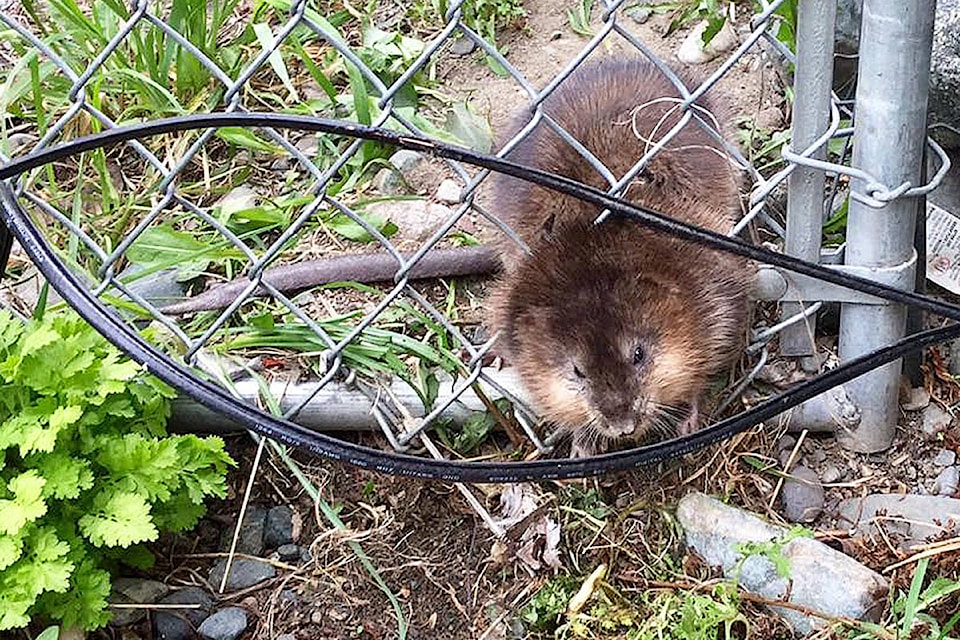“Poor little Muskrat! How on earth did it get in this predicament and how long has it been stuck,” is what Sherry Lidstone said when her husband Dale showed her this little rodent stuck in a chain link fence that surrounds their back yard in McLure.
“Dale gently pulled and pulled this fat little guy until he got it out,” said Lidstone, “It was really wedged in there and it was kind of high centered too. Poor baby.”
Lidstone said their home is some distance from water, but there was a water dish on the inside of the chain link fence, “So perhaps the muskrat was looking for a drink”.
“It was pretty comical, and quite the dilemma at first as to whether to push, pull, or cut the wire,” said Lidstone, “Once out it was waddling around and appeared no worse for wear. It hung around behind the house for several hours, and wasn’t here when we got back in the afternoon.”
Muskrats are small two to five pound semia-quatic rodents native to North America, but have been introduced to parts of Europe, Asia, and South America. They are found in wetlands over a wide range of climates and habitats, and can live up to three years in the wild.
Muskrats are excellent swimmers due to their webbed back feet, laterally flattened tails, can swim both backwards and forwards, and can hold their breath underwater for 15 to 20 minutes.
